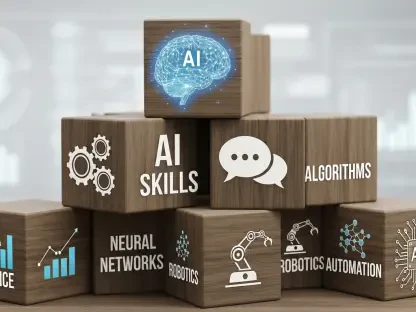Thanks to the cloud, the days of storing everything on your own computer or physical drives are over. You can save, access, and share your files, like photos, videos, and documents, from anywhere with an internet connection. It also means you can stream movies, listen to music, and use apps without needing to download them first. The cloud has made life more convenient because you don’t have to worry about losing your data if your device breaks, and you can access your information on different devices wherever you go.
Whether you’re an IT professional who has yet to master this technology or a business owner trying to implement it within your business, we are here to help. In this article, we’ll take a look at some of the basic concepts to get you started and give you a list of resources to help you and your team.
Start here
Should you decide to take one of the courses below, you’ll get familiar with the different flavors of cloud services: Infrastructure as a Service (IaaS), where you rent virtual machines and storage space; Platform as a Service (PaaS), which gives you tools to develop, test, and manage applications without worrying about the underlying infrastructure; and Software as a Service (SaaS), where you use software that’s hosted in the cloud, like Google Docs or Netflix.
You will learn about the four main deployment models: Public, private, hybrid, and community. You will also get a handle on virtualization, which lets one physical server run multiple virtual servers, making everything more efficient. Lastly, you will learn about scalability (how easily you can adjust resources) and security—two big factors you’ll always need to keep in mind when you’re working with the cloud.
Course AZ-900T00-A: Microsoft Azure Fundamentals
If you are brand new to Microsoft Azure, this might be just the right course for you, especially if you plan on taking the AZ-900 exam. According to the course’s page, you will get “hands-on experience with the product.”
The course is divided into three learning paths:
- Microsoft Azure Fundamentals: Describe cloud concepts (3 modules)
- Microsoft Azure Fundamentals: Describe Azure architecture and services (4 modules)
- Microsoft Azure Fundamentals: Describe Azure management and governance (4 modules)
AWS Cloud Practitioner Essentials
This 7-hour course is an excellent choice if you are preparing for the AWS Certified Cloud Practitioner exam. As for the prerequisites, you only need general business and technical knowledge in IT. It’s 100% free and digital.
There are eleven modules in total:
- Introduction to Amazon Web Services
- Compute in the Cloud
- Global Infrastructure and Reliability
- Networking
- Storage and Databases
- Security
- Monitoring and Analytics
- Pricing and Support
- Migration and Innovation
- The Cloud Journey
- AWS Certified Cloud Practitioner Basics
Oracle Cloud Infrastructure Foundations
A great resource to familiarize yourself with the cloud services provided by Oracle, this course is part of the learning path to get ready for the Oracle Cloud Infrastructure Foundations Associate Certification. You only need to dedicate 4 hours and 39 minutes of your time to complete it — and it’s free.
You will study ten modules:
- Course Introduction
- Oracle Cloud Infrastructure Introduction
- Identity and Access Management
- Networking
- Compute
- Storage
- Database
- Security
- Governance and Administration
Google Cloud Essentials
Unlike the courses we’ve seen so far, this one comes at a cost. The course consists of labs and in order to have access you must either purchase a subscription or five credits. The estimated time investment in this learning path is 3 hours and 45 minutes.
The course consists of the following labs:
- A Tour of Google Cloud Hands-on Labs
- Creating a Virtual Machine
- Compute Engine: Qwik Start – Windows
- Getting Started with Cloud Shell and gcloud
- Google Kubernetes Engine: Qwik Start
- Set Up Network and HTTP Load Balancers
edX’s IBM: Introduction to Cloud Computing
Although this course focuses on IBM Cloud app deployment, it also explores foundational cloud concepts and the services offered by AWS, Google, and others. The program is self-paced and should take you about three weeks to complete. For $49 USD, you can earn a certificate and get unlimited access to the learning materials.
The following five modules will get you off to a good start in your cloud career:
- Overview of Cloud Computing
- Cloud Computing Models
- Components of Cloud Computing
- Emergent Trends and Practices
- Cloud Security and Monitoring, Case Studies, and Jobs
Coursera’s Google Cloud Fundamentals: Core Infrastructure
This course offers a more in-depth alternative to Google Cloud Essentials. It is self-paced and takes about six hours to complete. The program is included with Coursera Plus, and you can earn a certificate upon completion. Financial aid is available.
The course covers these nine modules:
- Course Introduction
- Introducing Google Cloud
- Resources and Access in the Cloud
- Virtual Machines and Networks in the Cloud
- Storage in the Cloud
- Containers in the Cloud
- Applications in the Cloud
- Prompt Engineering
- Course Summary
Udacity’s Cloud Computing for Business Leaders
If you’re not an IT professional but simply want to leverage cloud technology in your business, this nano degree program might be the right choice for you. It’s divided into three courses, but the relevant content is found in course 2, which should take four weeks to complete.
Course 2 is made up of six lessons:
- Welcome to Cloud Computing for Business Leaders
- Introduction and Business Case for Cloud Computing
- Organizational Capability Building
- Cloud Governance Model
- Cloud Innovation and Futures
- Bintoso’s Cloud Transformation
The last lesson is actually a practical project you need to complete to get the nano degree certificate.
In closing…
After completing a foundational course on cloud computing, your next steps should focus on practical applications and deeper understanding. Engage with online communities and forums to stay updated on industry trends and best practices. Although books are not the most popular among tech students, they can also be valuable resources. Remember to read the most recent issues. You might also consider pursuing more advanced certifications relevant to your career goals. By applying your knowledge practically and staying informed, you’ll be well-equipped to leverage the full potential of cloud technology in your professional and, maybe, even your personal life.









